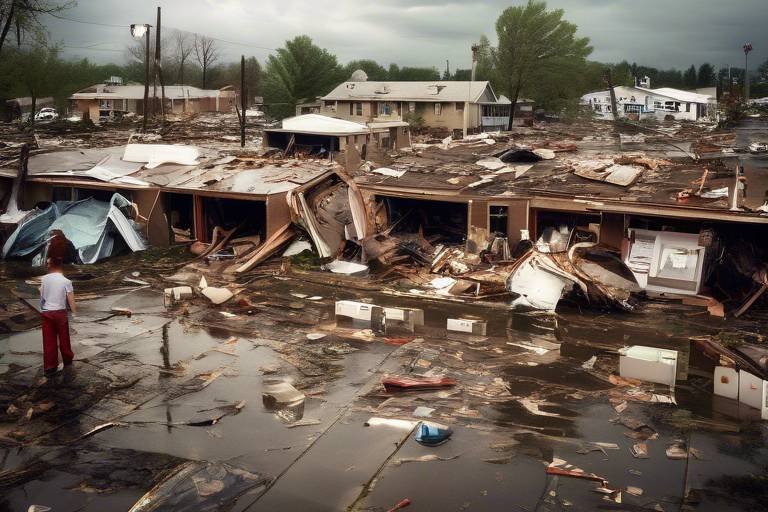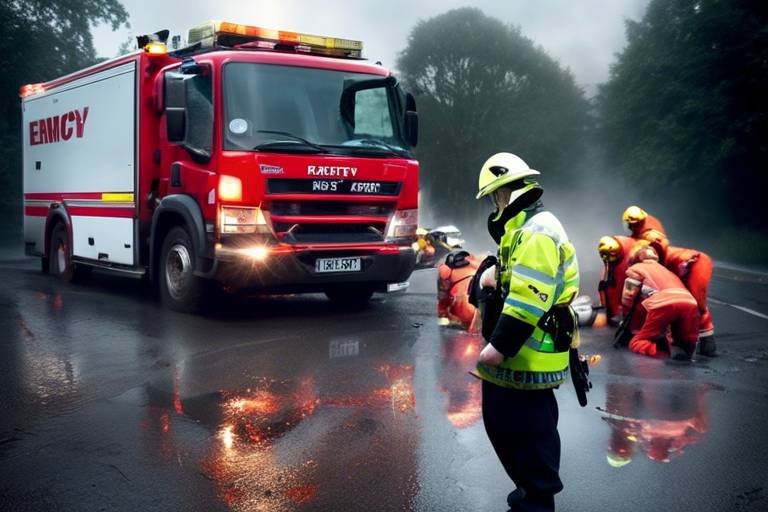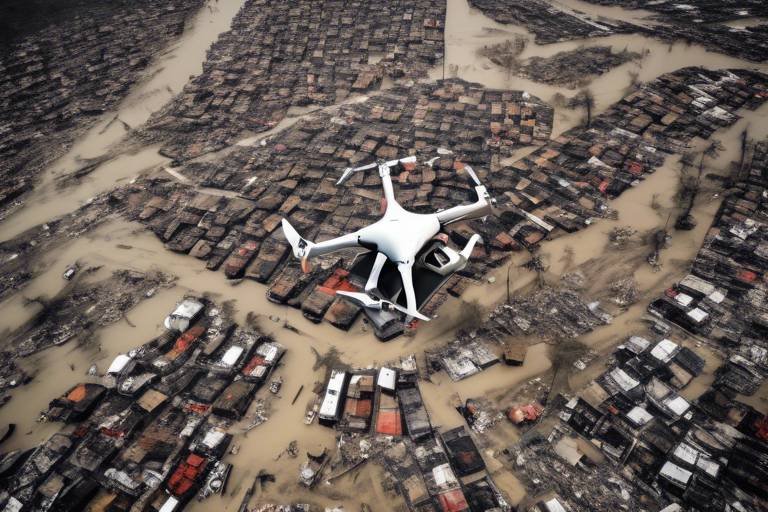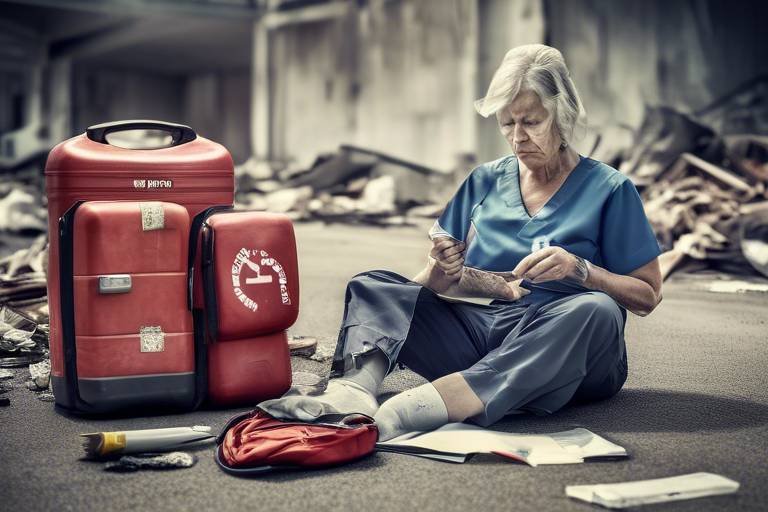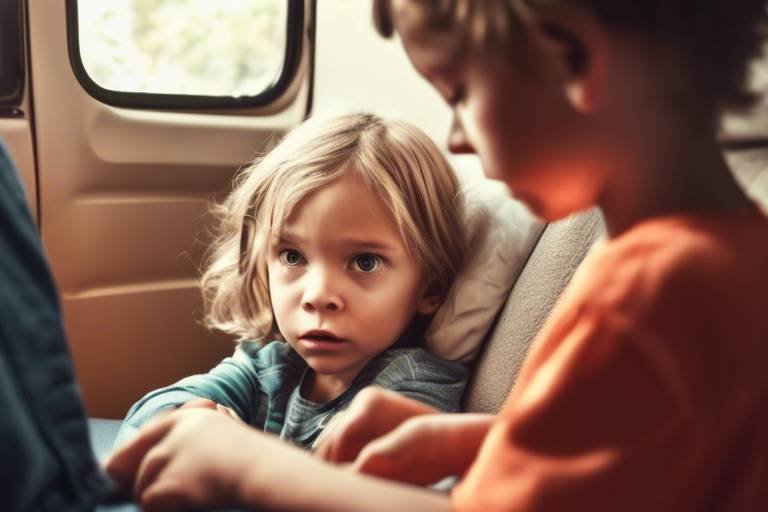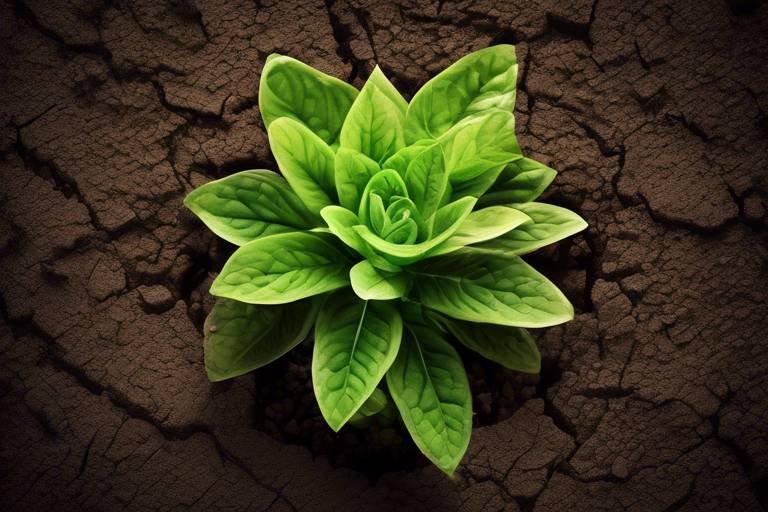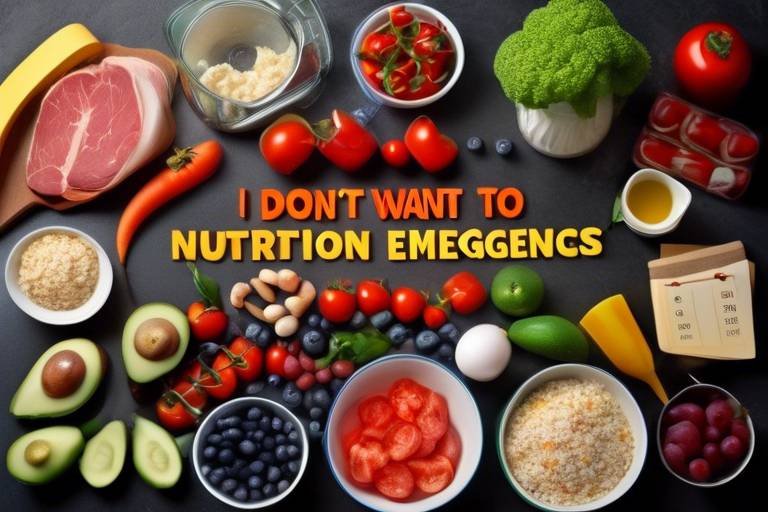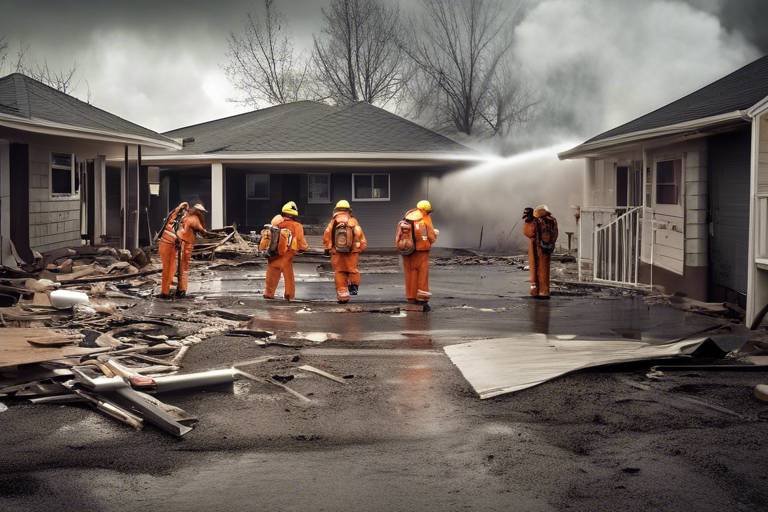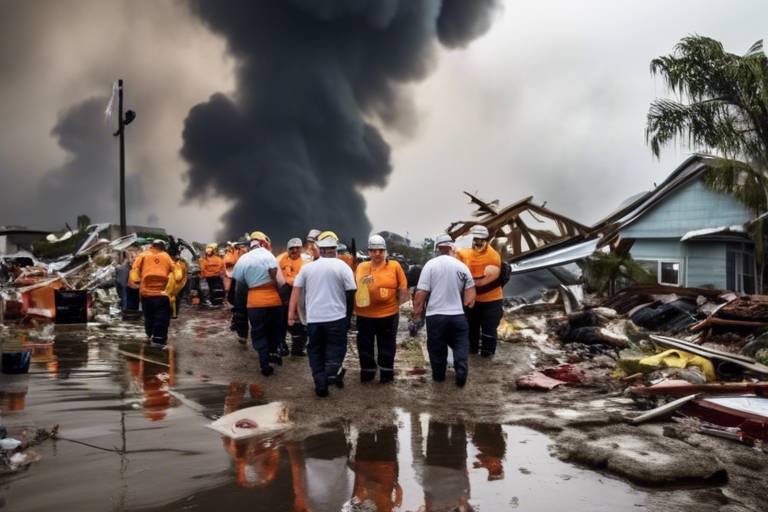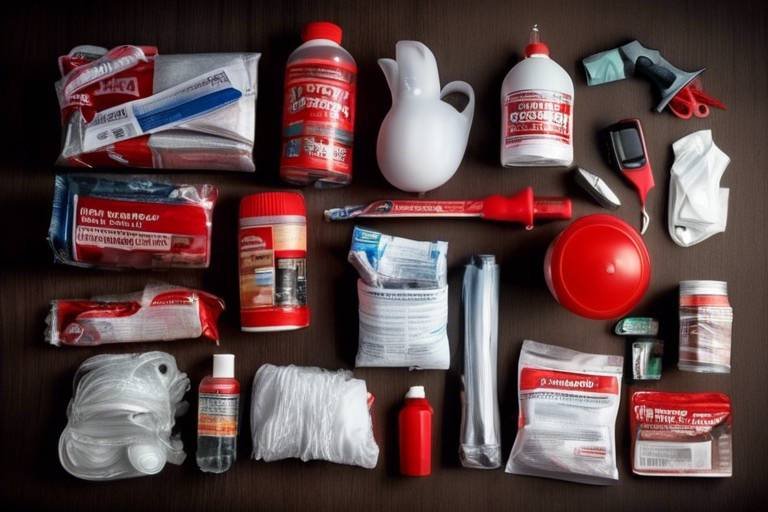Techniques for Purifying Water in a Disaster Situation
When disaster strikes, one of the most critical needs is access to safe drinking water. In such scenarios, knowing how to purify water can mean the difference between health and illness. Water contamination can occur from various sources, including flooding, sewage overflow, and chemical spills, leading to serious health risks. The urgency of the situation often leaves people scrambling for solutions. Thankfully, there are several effective techniques for purifying water that can be implemented quickly and easily. This article explores these methods, providing you with the knowledge to ensure that you and your loved ones have access to clean water during emergencies.
Water can become contaminated in numerous ways, and understanding these sources is essential for effective purification. Common contaminants include bacteria, viruses, parasites, and chemical pollutants. For instance, flooding can introduce harmful pathogens from sewage systems, while agricultural runoff can lead to chemical contamination. Recognizing the potential dangers of contaminated water is vital, as consuming it can cause illnesses such as cholera, dysentery, and hepatitis. In disaster situations, the importance of purifying water cannot be overstated, as it is a fundamental step to safeguard health and well-being.
Boiling is one of the oldest and most reliable methods for purifying water. It's straightforward: heat the water to its boiling point, and most pathogens will be killed. The beauty of boiling is its simplicity; you don't need fancy equipment or chemicals—just a heat source and a container. However, there are certain precautions to keep in mind. For example, ensure that the water is clear before boiling, as cloudy water may require additional filtration to remove particulates. Boiling is effective because it can kill bacteria, viruses, and parasites, making it a go-to method in emergencies.
To effectively purify water through boiling, it's crucial to know the right duration and temperature. Water should be brought to a rolling boil for at least one minute to ensure safety. At higher altitudes, where the boiling point is lower, it's recommended to boil for at least three minutes. This ensures that the heat penetrates the water sufficiently to eliminate harmful microorganisms. It's a bit like cooking; just as you wouldn't serve undercooked food, you shouldn't consume underboiled water.
In situations where traditional heating methods aren't available, there are alternative options to consider. Camp stoves, portable gas burners, and even solar cookers can be used to boil water effectively. For instance, solar cookers harness the sun's energy, making them an excellent option in sunny climates. They can reach high temperatures, allowing for effective water purification without the need for fuel. It's a clever way to turn a crisis into an opportunity to use renewable resources!
Once you've boiled your water, the next step is proper storage to maintain its purity. Using clean, food-grade containers is essential. Avoid using old milk jugs or containers that previously held chemicals, as these can leach harmful substances into the water. Ideally, use glass or BPA-free plastic bottles. Additionally, store the water in a cool, dark place to prevent algae growth and recontamination. Think of it as protecting your hard work; you wouldn't leave a freshly baked cake out in the open, would you?
Filtration is another effective method for purifying water, particularly in situations where boiling may not be feasible. There are various filtration methods available, ranging from commercial filters to DIY options. For instance, portable water filters can remove bacteria and protozoa, while activated carbon filters can eliminate chemicals and improve taste. If you're in a pinch, you can also create a simple DIY filter using sand, gravel, and charcoal. Just layer these materials in a container, and pour water through it. While this method may not remove all pathogens, it can significantly improve water quality.
Chemical treatments, such as chlorine or iodine, offer another layer of protection when purifying water. These chemicals can effectively disinfect water, making it safe to drink. However, it's essential to use them correctly to avoid adverse health effects. For instance, chlorine tablets are easy to use; simply follow the instructions on the packaging for the right dosage. Remember, while these treatments are effective, they often require a waiting period before the water is safe to consume, so plan accordingly.
Proper dosage is critical when using chemicals for water purification. Too little won't effectively kill pathogens, while too much can lead to health risks. Generally, one tablet of chlorine is sufficient for one liter of water. For iodine, the typical recommendation is five drops per liter. Always read the instructions carefully and ensure that you allow the water to sit for the recommended time before drinking. It's similar to following a recipe; if you skip steps or mismeasure, the outcome can be disappointing or even dangerous.
While chemical treatments are a handy solution, they do come with limitations. For instance, they may not be effective against certain parasites, and some people may have adverse reactions to the chemicals used. Additionally, chemical treatments may leave an unpleasant taste or odor in the water. In such cases, it might be necessary to combine methods, such as filtering the water after treating it chemically, to enhance safety and palatability. Being aware of these limitations can help you make informed decisions during a crisis.
- How long should I boil water to purify it? Boil water for at least one minute, or three minutes at higher altitudes.
- Can I use regular kitchen filters for purification? Some kitchen filters can help, but ensure they are designed to remove bacteria and viruses for effective purification.
- What should I do if I can't boil or chemically treat water? Consider using a DIY filtration method with sand, gravel, and charcoal as a temporary solution.

Understanding Water Contamination
Water is essential for life, but in disaster situations, it can quickly become a source of illness. Understanding water contamination is crucial for anyone looking to secure safe drinking water during emergencies. Contaminated water can harbor a variety of harmful substances that pose serious health risks. Common contaminants include bacteria, viruses, parasites, and chemical pollutants. These can originate from various sources, such as flooding, sewage overflow, and industrial spills. In the chaos of a disaster, it's easy to overlook the importance of water safety, but neglecting this can lead to serious health consequences.
One of the most common culprits of water contamination is bacteria. These tiny organisms can multiply rapidly in stagnant water, especially after flooding. Pathogenic bacteria like E. coli and Salmonella can cause severe gastrointestinal illnesses, leading to dehydration and other complications. Similarly, viruses such as Norovirus and Hepatitis A can find their way into water supplies during disasters, making it imperative to purify any water before consumption.
Another significant concern is parasites, which can be present in untreated water sources. For instance, Giardia and Cryptosporidium are common waterborne parasites that can cause prolonged illness. These organisms can survive in harsh conditions and are resistant to many traditional disinfection methods, underscoring the need for effective purification techniques.
In addition to biological contaminants, chemical pollutants can also compromise water quality. These can come from agricultural runoff, industrial activities, or even household products that spill during disasters. Chemicals like pesticides, heavy metals, and solvents can contaminate water supplies and pose long-term health risks. It's essential to be aware of these potential threats and take proactive measures to ensure the water you consume is safe.
To summarize, the sources of water contamination can be diverse and include:
- Bacterial contamination from flooding and sewage overflow.
- Viral contamination from infected individuals or animals.
- Parasitic contamination from untreated water sources.
- Chemical contamination from agricultural runoff and industrial spills.
Recognizing these risks is the first step in ensuring safe drinking water during emergencies. The next sections will delve into practical methods for purifying water, so you can be prepared when disaster strikes.

Boiling Water for Purification
When it comes to ensuring safe drinking water during a disaster, boiling is often the first method that comes to mind. It's not just simple; it's also incredibly effective. Boiling water is like giving it a thorough spa treatment, where all the nasty germs and bacteria are kicked out, leaving you with clean, drinkable water. This method works by raising the water temperature to a point where harmful microorganisms cannot survive. But how do you boil water effectively in an emergency? Let’s dive into the details!
First off, the process is straightforward. You need a heat source, a container, and water. Place the water in a pot, set it on your heat source, and bring it to a rolling boil. Once it reaches that point, you’ll want to keep it boiling for at least one minute to ensure all pathogens are eliminated. However, if you're at a higher altitude—like in the mountains—you should extend that time to three minutes. Think of it as giving your water a little extra love and care!
Now, let's talk about the benefits of boiling water. Not only does it kill bacteria, viruses, and parasites, but it also makes the water taste better by removing some of the chemical impurities that can linger. It’s like taking a long, refreshing shower after a tough day—everything just feels cleaner! Plus, you don’t need any fancy equipment or expensive chemicals; just fire and a pot. However, there are a few precautions to keep in mind. Always let the water cool before drinking, and be careful not to burn yourself on the hot container.
Understanding the right boiling duration and temperature is crucial for effective purification. The science behind boiling water is simple: when water reaches 100 degrees Celsius (212 degrees Fahrenheit), it begins to boil. This temperature is lethal to most pathogens. But here’s the kicker—how long should you boil it? For most situations, boiling for one minute is sufficient. However, in higher elevations, where the boiling point of water is lower, extending the boiling time to three minutes is a wise choice. This ensures that any lurking microorganisms are effectively eradicated.
In a disaster, you might not always have access to a conventional stove. But don’t worry—there are plenty of alternative heating methods to boil water. Camp stoves, portable gas burners, and even solar cookers can do the trick. Imagine using the sun’s rays to cook your food and purify your water; it’s like harnessing nature’s power! Just remember to keep a close eye on the process to ensure the water reaches a full boil.
Once you’ve boiled your water, the next step is to store it properly to maintain its purity. Think of your boiled water as a precious gem; you wouldn’t want to let it get dirty again! Use clean, food-grade containers with tight-fitting lids. Glass or BPA-free plastic bottles work well. Avoid reusing containers that previously held non-food items, as they can introduce contaminants back into your purified water. And always remember to label your containers with the date; this way, you’ll know how fresh your water is!

Duration and Temperature
When it comes to purifying water through boiling, understanding the duration and temperature is absolutely crucial. Boiling water is a time-tested method that effectively kills pathogens, bacteria, and viruses that can jeopardize your health in disaster situations. But how long should you boil your water to ensure it’s safe to drink? The general rule of thumb is to bring water to a rolling boil for at least one minute. However, if you're at a higher altitude (above 6,500 feet), you should extend this time to about three minutes. This is because the boiling point of water decreases as altitude increases, making it less effective at killing harmful microorganisms.
Now, let’s break this down a bit further. The science behind boiling is simple: when water reaches its boiling point, it creates steam, which effectively destroys harmful organisms. But you might wonder, “Isn’t just heating the water enough?” Not quite! You need to ensure that the water reaches a consistent boil for the recommended duration. Think of it like cooking a steak; if you pull it off the grill too soon, it’s not going to be safe to eat. Similarly, under-boiled water can still harbor dangerous pathogens.
To provide a clearer understanding, here’s a quick reference table:
| Altitude | Boiling Duration |
|---|---|
| Sea Level - 6,500 ft | 1 minute |
| Above 6,500 ft | 3 minutes |
In addition to the boiling time, the temperature is a key player in this purification game. Water needs to reach a temperature of at least 100°C (212°F) to effectively kill pathogens. This is the boiling point at sea level, and it’s important to monitor your heat source to ensure that the water maintains this temperature throughout the boiling period. If you’re using a camp stove or another alternative heating method, make sure it can reach and sustain this temperature.
Remember, it’s not just about boiling the water; it’s about making sure it’s done right. If you’re in a disaster scenario, every drop counts, and you don’t want to take any chances. So, whether you’re using a traditional stove, a campfire, or a solar cooker, keep an eye on that timer and the temperature. Your health and safety depend on it!

Alternative Heating Methods
When disaster strikes, access to traditional heating sources can be limited or completely unavailable. In such scenarios, become essential for boiling water and ensuring its safety for consumption. Think of it like being a culinary MacGyver—using whatever resources you have on hand to whip up a safe drink. Here are a few practical options:
One highly effective alternative is the use of camp stoves. These portable stoves are designed for outdoor use and can be fueled by propane or butane. They are lightweight, easy to set up, and can boil water in a matter of minutes. Just remember to use them in a well-ventilated area to avoid carbon monoxide buildup, which can be a silent killer, especially in enclosed spaces.
Another innovative option is the solar cooker. If the sun is shining, you can harness its power to heat water. Solar cookers are designed to concentrate sunlight, generating enough heat to boil water. They are particularly useful in remote areas where traditional fuel sources are scarce. Just imagine—using the sun’s rays to create safe drinking water while also reducing your carbon footprint. It’s a win-win!
For those in dire situations, fire pits or open flames can also serve as heating sources. Whether it’s a campfire or a makeshift fire pit, you can place a pot of water directly over the flames. However, this method requires more caution; ensure you have a stable base and keep a close eye on the fire to prevent accidents. Always remember that safety should be your top priority. Here’s a quick comparison of these heating methods:
| Heating Method | Pros | Cons |
|---|---|---|
| Camp Stove | Portable, quick, effective | Requires fuel, ventilation needed |
| Solar Cooker | Eco-friendly, no fuel needed | Weather dependent, slower boiling time |
| Open Flame | Accessible, can use natural materials | Safety risks, requires supervision |
In conclusion, while traditional heating methods are often the go-to for boiling water, these alternative methods can be lifesavers in emergencies. Adapting to your environment and using what you have can make a significant difference in ensuring safe drinking water. So, the next time you find yourself in a pinch, remember: creativity and resourcefulness can lead to effective solutions!

Storage Considerations
Once you've successfully boiled your water, it's crucial to store it properly to maintain its purity. Think of your purified water as a precious resource—just like gold, it needs to be kept safe from contamination. The containers you choose for storage can make all the difference in ensuring that your water remains safe to drink.
First and foremost, always use clean, food-grade containers. This means avoiding anything that has previously held chemicals or non-food substances. Ideally, you should opt for containers made of materials like glass or BPA-free plastic. These materials not only help maintain water quality but also prevent any leaching of harmful substances into your precious liquid. If you’re in a pinch, even a clean soda bottle can work, but make sure it’s thoroughly rinsed out!
Next, consider the size of the containers you're using. It's often better to store water in smaller containers, as this allows for easier handling and reduces the risk of contamination when opening. You wouldn't want to open a large container only to find that a single sip has led to a whole batch of water becoming unsafe.
Another vital aspect is the location where you store your water. Keep it in a cool, dark place away from direct sunlight and heat sources. Just like how sunlight can spoil milk, it can also degrade the quality of your water over time. Ideally, a basement or a shaded area in your home would be perfect. If you're outdoors, consider using tarps or shaded areas to protect your water supply.
Lastly, it's important to label your containers with the date of purification. This simple step can save you from drinking water that has been stored for too long. Water doesn't spoil like food, but its quality can diminish, so it's wise to use it within six months of purification. If you find yourself in an extended emergency, make a habit of checking your stored water regularly.
In summary, proper storage of purified water is just as important as the purification process itself. By using clean containers, storing in suitable conditions, and keeping track of dates, you can ensure that your water remains safe and ready for consumption when you need it the most.
- How long can I store boiled water? Generally, boiled water can be stored for up to six months if kept in clean, sealed containers away from light and heat.
- What type of container is best for storing water? Food-grade plastic or glass containers are ideal. Avoid containers that previously held chemicals or non-food items.
- Can sunlight affect the quality of stored water? Yes, direct sunlight can degrade the quality of water over time, so it’s best to store it in a cool, dark place.
- Is it necessary to label water storage containers? Absolutely! Labeling helps you keep track of when the water was purified, ensuring you use it within the recommended time frame.

Filtration Techniques
When it comes to purifying water in emergency situations, can be a lifesaver. Imagine being in a disaster scenario where clean drinking water is scarce. You might think that boiling is the only option, but filtration can be just as effective, if not more so, depending on the contaminants present. Water can be tainted with a variety of impurities, from sediments and bacteria to chemicals and heavy metals. Understanding the different filtration methods available can empower you to choose the right approach for your specific situation.
There are several filtration methods that can be used to purify water, ranging from simple DIY solutions to more advanced commercial filters. Each method has its own strengths and weaknesses, and the choice often depends on the resources available and the type of contaminants you are dealing with. Here’s a closer look at some of the most common filtration techniques:
- Commercial Water Filters: These are designed specifically for removing a wide range of contaminants. Options include activated carbon filters, reverse osmosis systems, and ceramic filters. Each type has its own mechanism for trapping impurities, making them effective for different needs.
- DIY Filtration Systems: If you find yourself without access to commercial filters, you can create your own filtration system using common materials. A simple method involves layering sand, gravel, and charcoal in a container to filter out larger particles and some chemicals. While this won't eliminate all pathogens, it can significantly improve water quality.
In addition to the methods mentioned above, it's important to consider the size of the filter pores. For instance, filters with smaller pore sizes can effectively remove bacteria and protozoa, while larger pore sizes might only filter out sediment. This leads to the question: how effective is your filtration method? To ensure you're making the best choice, always check the specifications of the filter you're using.
Another key aspect of water filtration is maintenance and replacement of filters. Over time, filters can become clogged with contaminants, reducing their effectiveness. Regularly checking and replacing filters according to the manufacturer's guidelines is crucial to maintain the safety of your drinking water. If you're using a DIY filter, be prepared to refresh the materials used, as they can become saturated with impurities.
As you can see, filtration techniques offer a viable solution for purifying water in disaster scenarios. Whether you opt for a commercial filter or a DIY approach, understanding the mechanics behind these methods can help you make informed decisions. Remember, in the face of a disaster, having access to clean water is not just a luxury; it’s a necessity that can make all the difference in ensuring your health and safety.
Q: How do I know if my water is contaminated?
A: Look for signs such as unusual color, smell, or taste. If in doubt, assume it's contaminated and purify it.
Q: Can I use a coffee filter for water purification?
A: Yes, a coffee filter can help remove larger particles, but it won't eliminate bacteria or viruses. Always follow up with boiling or chemical treatment.
Q: How often should I replace my water filter?
A: This depends on usage and the type of filter. Generally, replace filters as recommended by the manufacturer, or sooner if you notice a decrease in water flow.

Chemical Water Treatment
Chemical treatments are among the most straightforward and effective methods for disinfecting water, especially in disaster situations where access to clean water is compromised. These treatments typically involve the use of substances like chlorine and iodine, which can kill a wide range of pathogens, including bacteria, viruses, and protozoa. The beauty of chemical treatment lies in its simplicity; a few drops can transform potentially dangerous water into a safe drinking source. However, it’s crucial to understand how to use these chemicals properly to ensure safety and effectiveness.
When using chemical treatments, the dosage is everything. Too little may not effectively purify the water, while too much can lead to adverse health effects. For instance, chlorine is often used in tablet form or liquid, and the recommended dosage can vary based on the concentration of the chemical and the volume of water being treated. Generally, a concentration of 2-4 mg/L is sufficient for effective disinfection. It’s essential to let the treated water sit for at least 30 minutes before consumption to allow the chemicals to work their magic. This waiting period is crucial as it ensures that harmful microorganisms are effectively neutralized.
Here's a quick reference table to illustrate the recommended dosages for common chemical treatments:
| Chemical | Recommended Dosage (mg/L) | Contact Time (minutes) |
|---|---|---|
| Chlorine | 2-4 | 30 |
| Iodine | 1-2 | 30 |
While chemical treatments are effective, they are not without limitations. For instance, they may not remove chemical contaminants like heavy metals or pesticides, which can be prevalent in polluted water sources. In such cases, relying solely on chemical methods may not guarantee safety. It's also important to note that some individuals may have sensitivities to these chemicals, particularly iodine. Therefore, it’s wise to have alternative purification methods in mind, such as filtration or boiling, to ensure comprehensive safety.
In disaster scenarios, it’s vital to remain informed and prepared. Understanding the proper use of chemical treatments not only enhances your ability to ensure safe drinking water but also empowers you to assist others in your community. Always keep a small supply of water purification tablets or liquid chlorine in your emergency kit, and familiarize yourself with their usage. Knowledge is your best ally in times of crisis, and being able to provide clean water can make a world of difference.
- How long should I wait after adding chemicals to my water? It is recommended to wait at least 30 minutes to allow the chemicals to effectively disinfect the water.
- Can I use bleach for water purification? Yes, unscented household bleach can be used, but ensure it's the right type and follow dosage guidelines carefully.
- What should I do if my water is cloudy? If water is cloudy, filter it through a clean cloth or coffee filter before adding chemicals for purification.

Dosage and Safety Guidelines
When it comes to using chemicals for water purification, understanding the correct dosage is absolutely crucial. Using too little might not effectively eliminate harmful pathogens, while using too much can introduce toxic substances into your drinking water. For instance, when using chlorine, a common recommendation is to add about 2 to 4 drops of unscented household bleach (5-6% sodium hypochlorite) per quart (liter) of water. It's essential to mix it thoroughly and let the water sit for at least 30 minutes before consumption to ensure that the chlorine has had enough time to do its job.
Similarly, if you're using iodine tablets, make sure to follow the manufacturer's instructions closely. Typically, one tablet is sufficient for one quart of clear water, but if the water is cloudy, you might need to use two tablets. After adding the tablets, allow the water to sit for at least 30 minutes before drinking. Remember, iodine is not recommended for pregnant women or individuals with thyroid problems, so always err on the side of caution.
It's also critical to consider the water temperature and the presence of organic matter, as both can affect the efficacy of chemical treatments. For example, warmer water can enhance the effectiveness of chlorine, while the presence of dirt or debris may require additional treatment steps. Always filter out any visible particles before adding chemicals.
Safety should be your top priority when treating water chemically. Always store chemicals in a cool, dry place, out of reach of children and pets. Make sure you label any containers clearly and avoid mixing different chemicals unless you are absolutely certain of their compatibility. If you're unsure about the safety of the treated water, it's better to err on the side of caution and seek alternative purification methods.
For a quick reference, here's a simple table summarizing the dosages for common chemical treatments:
| Chemical | Dosage (per quart/liter) | Wait Time |
|---|---|---|
| Chlorine Bleach | 2-4 drops | 30 minutes |
| Iodine Tablets | 1 tablet (clear water), 2 tablets (cloudy water) | 30 minutes |
In conclusion, while chemical treatments can be incredibly effective for purifying water in disaster scenarios, it's vital to adhere to these dosage and safety guidelines to ensure that you're not only making the water safe to drink but also protecting your health. Always keep in mind that when in doubt, consulting a professional or seeking alternative purification methods is the best course of action.
- How do I know if my water is contaminated? Look for signs such as unusual color, odor, or taste. If in doubt, treat the water before use.
- Can I use expired chemicals for water purification? No, expired chemicals may not work effectively and could pose health risks.
- Is it safe to drink water treated with bleach? Yes, as long as the correct dosage is used and the water is allowed to sit for the recommended time.
- What should I do if I accidentally use too much chemical? Do not drink the water and seek medical advice immediately.

Limitations of Chemical Treatments
While chemical treatments like chlorine and iodine can be effective in disinfecting water, they come with certain limitations that users must be aware of. First, these chemicals do not remove physical contaminants such as dirt, debris, or heavy metals. This means that if your water source is visibly dirty or contains particles, simply adding chemicals may not suffice. In such cases, filtration methods should be employed prior to chemical disinfection to ensure the water is safe for consumption.
Another significant limitation is the taste and odor that chemical treatments can impart to the water. Many people find that water treated with chlorine or iodine has an unpleasant taste, which can discourage them from drinking enough water during a crisis. This is particularly concerning in long-term situations where ongoing chemical treatment is necessary. To mitigate this issue, it’s advisable to let the treated water sit for a while, allowing some of the chemical taste to dissipate, or to use a carbon filter afterward to improve the flavor.
Moreover, there are health risks associated with excessive use of these chemicals. For instance, over-dosing on iodine can lead to thyroid dysfunction, particularly in sensitive populations such as pregnant women. Similarly, chlorine can form harmful byproducts when it reacts with organic matter in the water, potentially leading to health issues with prolonged exposure. Therefore, it's crucial to adhere to dosage guidelines and avoid relying solely on chemical treatments for water purification.
Lastly, the effectiveness of chemical treatments can be influenced by factors such as temperature and pH levels of the water. For example, chlorine is less effective in cold water and may require longer contact times to ensure disinfection. Understanding these variables is essential for anyone relying on chemical methods for water purification, particularly in emergency situations where conditions may vary significantly.
In conclusion, while chemical treatments are a valuable tool in the arsenal for water purification, they should not be viewed as a standalone solution. Combining these methods with filtration and boiling can provide a more comprehensive approach to ensuring water safety during emergencies.
- What is the best method for purifying water in a disaster? The best method often involves a combination of boiling, filtration, and chemical treatments to ensure safety.
- How long should I boil water to purify it? Boiling water for at least one minute is generally sufficient, but at higher altitudes, you should boil for at least three minutes.
- Can I use bleach to purify water? Yes, but it must be unscented and used in the correct dosage—typically 8 drops per gallon of water.
- Are there any natural methods for purifying water? Yes, methods like solar disinfection or using natural filters can be effective, but they may take longer than chemical or boiling methods.
Frequently Asked Questions
- What are the common contaminants found in water during disasters?
In disaster situations, water can be contaminated by a variety of sources including sewage, chemicals, and debris. Common contaminants include bacteria, viruses, parasites, heavy metals, and organic pollutants. Recognizing these is crucial for understanding the importance of water purification.
- How long should I boil water to ensure it's safe to drink?
To effectively purify water through boiling, it should be brought to a rolling boil for at least one minute. If you're at higher altitudes (above 6,500 feet), it's recommended to boil for three minutes to ensure that all harmful pathogens are killed.
- What alternative methods can I use to boil water if I don't have a stove?
If you find yourself without a traditional heating source, there are several alternatives! Camp stoves, portable grills, or even solar cookers can be used to boil water. Just make sure whatever method you choose can reach the necessary boiling temperature!
- How should I store boiled water to keep it safe?
After boiling, it's essential to store your water in clean, sanitized containers with tight-fitting lids. Glass or food-grade plastic containers work best. Avoid using containers that previously held chemicals or non-food substances to prevent any risk of contamination.
- What are the best filtration techniques for emergency water purification?
Filtration can be done using a variety of methods. Commercial water filters are effective, but if you’re in a pinch, DIY options like using a clean cloth, coffee filter, or sand and gravel can also work. Just remember that filtration alone may not remove all pathogens, so it’s best used in conjunction with boiling or chemical treatments.
- How do I safely use chemicals like chlorine or iodine for water purification?
To use chlorine or iodine, follow the instructions on the product label carefully! Typically, a few drops of chlorine or iodine tablets per liter of water are sufficient. Let the water sit for at least 30 minutes before drinking to ensure effective disinfection.
- Are there any limitations to using chemical treatments for water purification?
Yes, while chemical treatments can be effective, they have limitations. They may not remove all contaminants, especially chemical pollutants or heavy metals. Additionally, some people may be sensitive to the taste or effects of these chemicals, so consider alternative methods if necessary.



